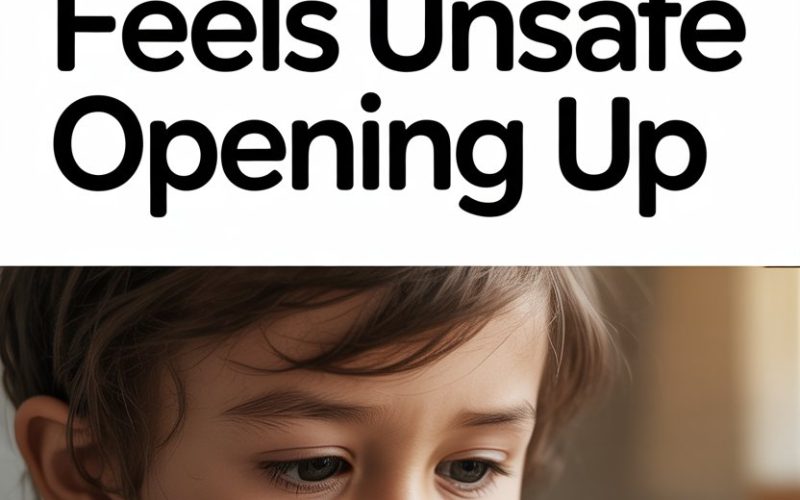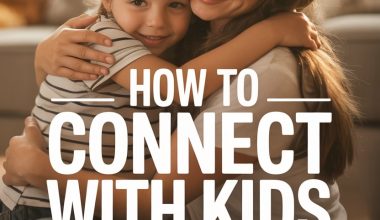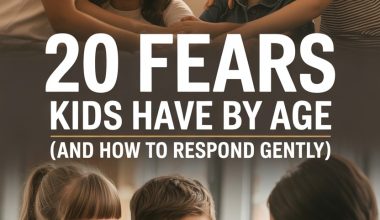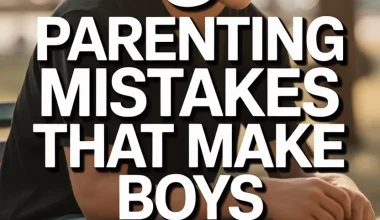Kids have the emotional range of Shakespeare’s finest characters and the subtlety of a sledgehammer, but even the most expressive child can clam up when something feels “off.”
For parents on the go (is there any other kind?), it’s easy to miss the quieter signs that your child doesn’t feel safe sharing what’s on their mind.
When children don’t feel safe opening up, the repercussions are bigger than a missed chance to swap knock-knock jokes at bedtime.
Emotional safety is the bedrock of trust, resilience, and healthy communication—not just now, but for years to come.
Here are six red flags to watch for, plus what you can actually do about each one.
1. Avoidance of Eye Contact and Physical Distance
You ask how their day went, and suddenly there’s a fascinating spot on the ceiling. Or your child transforms into a mini ninja, stealthily sidestepping your hugs.
This isn’t just classic kid awkwardness—consistent avoidance often means “I’m not comfortable talking about this with you.”
Researchers have linked eye contact avoidance to stress and discomfort in children, especially when they’re anxious about judgment or negative reactions.
The same goes for physical distance—if your snuggler suddenly becomes a porcupine, something has shifted.
What works: Ditch the detective routine. Try talking while side-by-side, like in the car or on a walk.
Many kids find it easier to share when they aren’t under a microscope. Offer gentle affection but give them space to approach you when they’re ready; forced closeness can make things worse.
2. Reluctance or Refusal to Share Details
If “How was school?” is met with “Fine” (and absolutely nothing else), you might chalk it up to typical kid surliness. Sometimes it is.
But if ordinary chatter—about friends, teachers, or even their favourite snack—dries up over time, take note.
Experts have found that children who feel emotionally unsafe tend to clam up or only talk about surface-level topics. They might change the subject, give monosyllabic answers, or insist they “don’t remember.”
What works: Share a vulnerable moment from your own day, even if it’s just a tiny mishap (spilled your coffee again, brilliant).
This models openness and shows it’s okay to talk about the imperfect stuff. And try not to interrogate—sometimes you learn more with a warm “I’m here if you want to talk,” then a high-pressure Q&A.
3. Over-the-Top Cheerfulness or Agreeableness
Picture this: your child is unfailingly agreeable, always saying what they think you want to hear, never rocking the boat.
While it sounds dreamy compared to an epic eye-roll, it can be a sign they don’t feel safe showing their real feelings.
According to child psychologists, some kids become people-pleasers as self-protection.
If they sense that honesty brings upset or disappointment, they’ll slap on a smile and tell you what you want to hear—even if it’s nowhere near the truth.
What works: Praise honesty, not just “good” behaviour. When your child disagrees or expresses a negative emotion, resist the urge to fix it right away.
Simple acknowledgment (“I can see you’re really frustrated”) teaches them that their feelings aren’t too much for you.
4. Withdrawal from Family Time and Conversations
A child who was once glued to your side now spends hours holed up in their room, headphones on, door closed.
Solitude is healthy, but when your child withdraws from family meals, games, or even casual chats, it may be more than just “growing up.”
Research shows emotional withdrawal is a classic sign of distress, especially when paired with irritability or tension around parents. Kids don’t always have the words to explain—so they disappear instead.
What works: Invite participation, but respect their recharging time. Instead of demanding they join every family activity, offer options (“Would you like to help with dinner, or pick the music?”).
Keep showing up without pressure; consistency builds trust, even when you’re met with shoulder shrugs or the dreaded “meh.”
5. Heightened Sensitivity to Criticism or Disagreement
Does your child melt down when you give gentle feedback? Do simple corrections trigger tears, anger, or defensive outbursts? Feeling unsafe often makes kids ultra-sensitive to anything that sounds even remotely critical.
Kids who’ve learned that honesty equals trouble may anticipate negative reactions, even when none are intended.
According to a child expert, children who felt emotionally unsafe at home were more likely to interpret neutral comments as criticism.
What works: Replace “Why did you do that?” with “Can you help me understand what happened?” Focus on problem-solving together, not blame.
And after a disagreement, repair quickly—apologise if you overreacted, and remind them it’s safe to mess up in your home.
6. Repeated Lying or Hiding Things
All kids try to get away with something at some point (the biscuit tin is a powerful lure). But if lying or secretive behaviour becomes routine, it may not be about mischief—it’s about protection.
Children who don’t feel emotionally safe may lie to avoid conflict or punishment. According to a psychological expert, children are more likely to fib when they fear negative consequences.
What works: When you catch your child in a lie, keep your cool. Reacting with disappointment or anger just reinforces the idea that telling the truth is risky business.
Calmly talk about why honesty matters and reassure them that everyone messes up—you’re more interested in understanding than punishing.
What Kids Wish You Knew About Emotional Safety
Children won’t always say, “I don’t feel safe talking to you about this,” but their behaviour is a steady drip of clues. Even the busiest, most sleep-deprived parent can pick up on these signs—and shift gears.
Try offering gentle invitations to connect, model imperfection, and let your child see you handling tough emotions, too. Some nights you’ll get an eye roll or radio silence.
Other times, you might get a story about school, friends, or even their biggest worry—told quietly while you’re unloading the dishwasher.
That’s the win. It’s not about perfect communication; it’s about showing up, again and again, with curiosity and compassion.
And who knows? Maybe next time, they’ll even make eye contact—before they ask for a biscuit.





